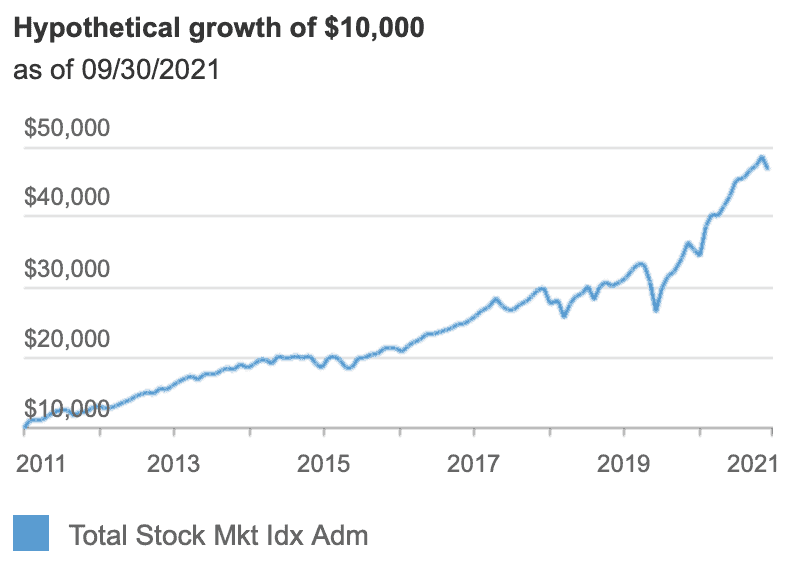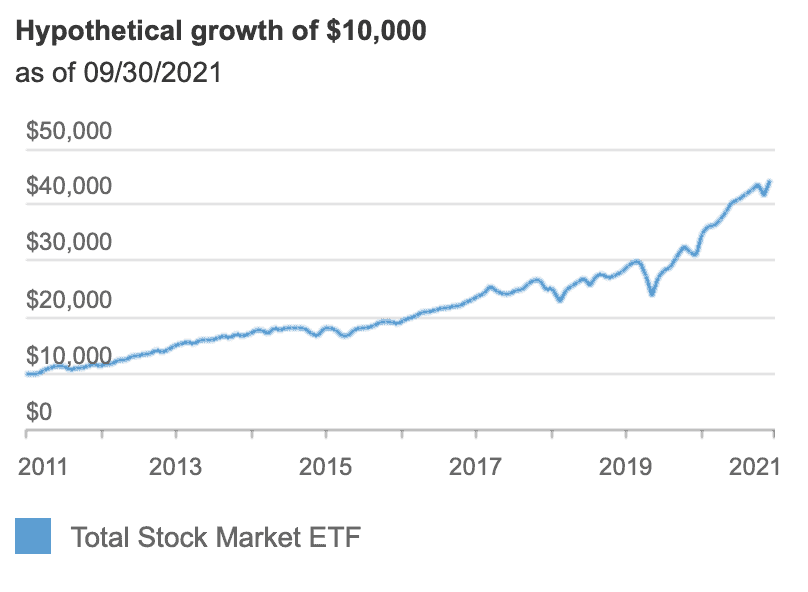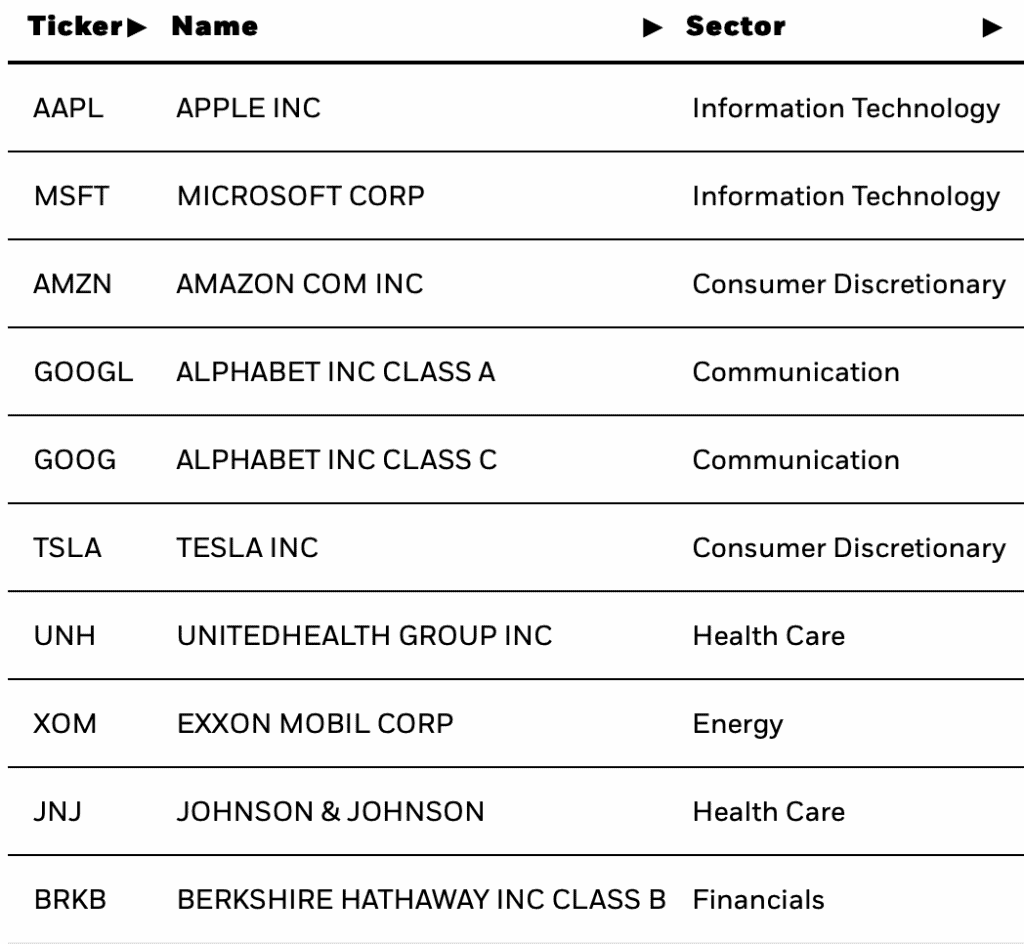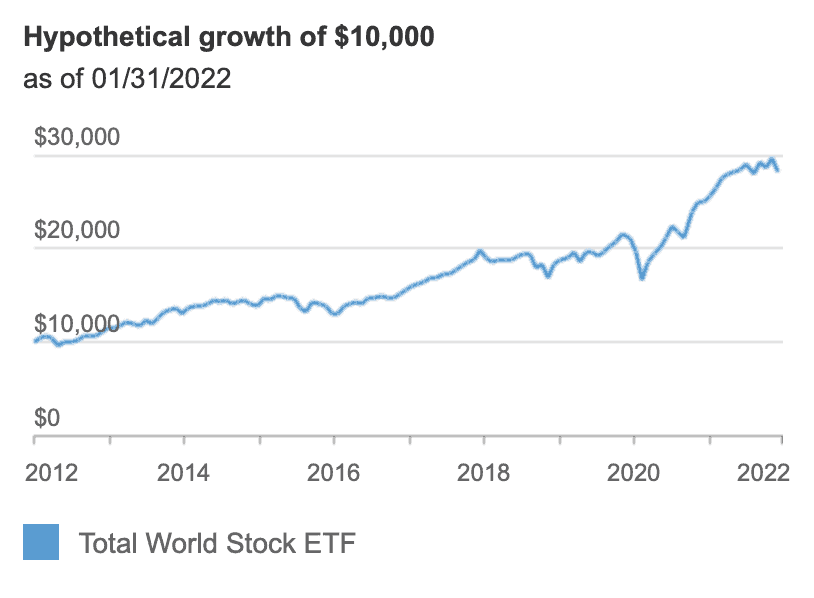Work shapes a third of our lives. If you’re unsure about how to genuinely feel […]
This is a comparison of VTI vs VTSAX. Both seek to track the performance of a benchmark index that measures the investment return of the overall stock market.
The distinction between VTI and VTSAX: VTI is an ETF while VTSAX is a mutual fund
Both are designed to provide investors with exposure to the entire U.S. equity market, including small-, mid-, and large-cap growth and value stocks. The fund’s key attributes are its low costs, broad diversification, and the potential for tax efficiency.
To understand the difference between ETF and mutual funds, please read my article here.
Why should you consider VTI and VTSAX
If you seek a low-cost way to gain broad exposure to the U.S. stock market, you may consider these index funds as either a core equity holding or US-based stock fund. Because VTI and VTSAX (and similar investments) come with built-in diversification, they involve less risk than individual stocks and bonds.
VTI and VTSAX: Historical Performance
| VTI | VOO | VT | SPY | VTSAX | |
| YTD return | -24.87 | -23.9 | -25.56 | -24.25 | -24.89 |
| 1 Year Return | -18 | -15.52 | -20.8 | -15.99 | -18.01 |
| 3 Year Return | 7.58 | 8.12 | 3.87 | 7.56 | 7.59 |
| 5 Year Return | 8.55 | 9.2 | 4.45 | 8.62 | 8.55 |
| 10 Year Return | 11.33 | 11.66 | 7.54 | 11.04 | 11.33 |
| Since Inception | 7.26 | 12.52 | 5.53 | 8.81 | 6.89 |
VTSAX

VTI

VTI and VTSAX: key findings and overlap
| VTI | VTSAX | |
| Description | Vanguard Total Stock Market ETF | Vanguard Total Stock Market Index Fund Admiral Shares |
| Asset Class | Domestic Stock - General/ Large Blend | Domestic Stock - General/ Large Blend |
| Expense Ratio | 0.03% | 0.04% |
| Distributions | Quarterly | Quarterly |
| Minimum investment | N/A | $3000 |
| Number of stocks | 4025 | 4066 |
| Fund total net assets | $1.3 trillion | $1.3 trillion |
| PE ratio | 23.4x | 17.1x |
| PB ratio | 4.0x | 3.1x |
| ROE | 17% | 19.3% |
| Earnings growth rate | 19.0% | 19.9% |
VTI vs VTSAX: Fund top holdings

VTI vs VTSAX: Sector breakdown

Caveat
The key risk for these funds is the volatility that comes with its full exposure to the stock market. Both carry the inherent risk of loss associated with owning assets that follow the stock market.
Differences between VTI vs VTSAX
Liquidity
Trading of VTSAX is only available at the end of the trading day, while VTI can be bought or sold throughout the trading day.
VTI provides real-time pricing since it’s an ETF, so you can see its price change throughout the day during trading hours.
Since VTSAX is a mutual fund, it isn’t priced until the trading day is over. You will not know the price until you’ve placed your trade. As Vanguard explains on their investment page:
Regardless of what time of day you place your order, you’ll get the same price as everyone else who bought and sold that day. That price isn’t calculated until after the trading day is over.
Share Price
VTSAX’s net asset value (NAV), or share price, is derived after the market closes. While for VTI, the share price changes according to the stock market's fluctuations.
Expense Ratio
VTI has a slightly lower expense ratio of 0.03% vs. VTSAX’s 0.04%. Although this isn’t necessarily a huge difference in cost, it affects the performance of the index funds.
Minimum Fees
- VTI for the price of 1 share
- VTSAX with a minimum of $3,000
How to buy
You can consider using moomoo/ TD Ameritrade/Tiger Brokers invest in NYSE.
Read the guides here: moomoo, Tiger Brokers
VTI vs VTSAX summary – which one is better?
With VTI’s slightly lower expense ratio of 0.03% vs. VTSAX’s 0.04%, VTI appears to be better considering the holdings and other characteristics of the two are practically identical.
Both include large-cap, mid-cap, and small-cap companies, which means they’ll provide identical investment returns.
Related article
VTI vs VOO: which index fund is a better investment (updated 2020)
Thank you for reading! Please like my Facebook page to get the latest updates. Please click here for Referral deals.







